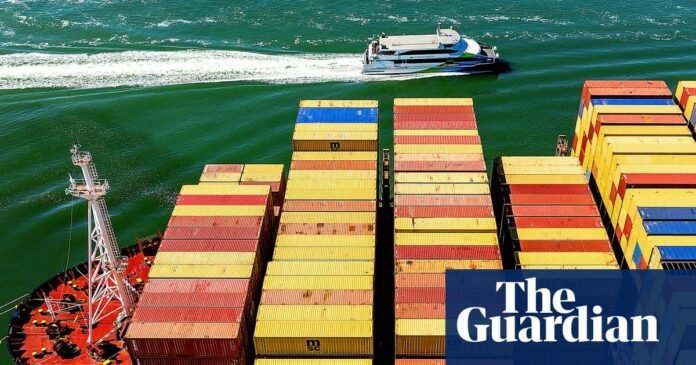Dozens of countries face higher taxes on their exports to the US now that Donald Trump’s latest wave of country-specific tariffs has come into force.
The sweeping “reciprocal” levies announced by the White House a week ago – just before a previous 1 August deadline was due to elapse – were in place as of a minute past midnight Washington time on Thursday.
Just before midnight, Trump claimed on social media that billions of dollars would start flowing into the US as a result of the tariffs.
“The only thing that can stop America’s greatness would be a radical left court that wants to see our country fail,” the president wrote in capital letters, referencing an ongoing case in the US court of appeals which is considering whether he exceeded his authority in imposing the “reciprocal” tariffs.
The rates range from 41% on war-torn Syria to 10% for the UK and will be applied on top of the usual tariffs applying to products imported to the US.
This means that while Brazil’s “reciprocal” level is 10%, its total rate is 50% after an executive order imposed a 40% additional levy from Wednesday linked to the prosecution of the country’s former president Jair Bolsonaro.
The EU is the only trading partner where its baseline rate – set at 15% after a framework deal – will include previous tariffs. It means, for example, cheeses that are normally hit with import duties of 14.9% will be taxed at 15% and not 29.9%.
Since the announcement late on Thursday last week, governments around the world have been racing to try to reach deals to avert border taxes they fear could deter investors and result in job losses.
The Swiss president, Karin Keller-Sutter, was in Washington on Tuesday for two days of meetings with senior Trump administration officials to try to reverse a 39% levy that blindsided the government when it was unveiled.
The Swiss government were set to hold an “extraordinary meeting” on Thursday, following the return of officials from Washington
Meanwhile, India’s 25% tariff rate could rise to a total of 50% after Trump signed an executive order on Wednesday imposing an additional levy in retaliation for the country’s purchase of oil from Russia. Delhi has 21 days to respond. Trump has threatened to use the same tactic on other countries that supply Russia.
after newsletter promotion
Trump first unveiled the raft of country-specific rates on 2 April, a date he called “liberation day”, claiming the rest of the world had looted the US for decades.
After a 90-day pause brought in a week later and another four-week truce announced on 7 July, he confirmed the new set of rates last Friday.
Some trading partners secured reductions via negotiations or by striking deals, including the UK, Thailand, Cambodia, Vietnam, Indonesia, the Philippines, Japan, South Korea, Pakistan and the EU.
Other countries are negotiating tariffs not covered by last week’s announcement. Canada has been hit with a total rate of 35% that came in last Friday, while Mexico avoided an increase from its 25% rate on the same date after it was granted a 90-day extension. China faces a 30% rate while negotiations continue before its separate 12 August deadline for higher rates.
On Wednesday, Trump also warned that the US would impose a tariff of about 100% on semiconductor chips imported from countries not producing in America or planning to do so.
With Reuters





